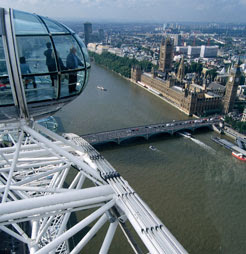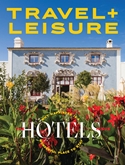
The Uffizi Gallery is housed in the Palazzo degli Uffizi, a palazzo in Florence, Italy, housing one of the oldest and most famous art museums in the world. It is located at 43°46′7.1″N, 11°15′18.77″E.
Building of the palace was begun by Giorgio Vasari in 1560 for Cosimo I de' Medici as the offices for the Florentine magistrates — hence the name "uffizi" ("offices"). Construction was continued to Vasari's design by Alfonso Parigi and Bernardo Buontalenti and ended in 1581. The cortile is so long and narrow, and open to the Arno River at its far end through a Doric screen that articulates the space without blocking it, that architectural historians treat it as the first regularized streetscape of Europe. Vasari, a painter as well as architect, emphasized the perspective length by the matching facades' continuous roof cornices, and unbroken cornices between storeys and the three continuous steps on which the palace-fronts stand.
The Palazzo degli Uffizi brought together under one roof the administrative offices, the Tribunal and the state archive (Archivio di Stato). The project that was planned by Cosimo I, Grand Duke of Tuscany to arrange that prime works of art in the Medici collections on the piano nobile was effected by Francesco I, who commissioned from Buontalenti the famous Tribuna degli Uffizi that united a selection of the outstanding masterpieces in the collection in an ensemble that was a star attraction of the Grand Tour.
Over the years, further parts of the palace evolved into a display place for many of the paintings and sculpture collected by the Medici family or commissioned by them. After the house of Medici was extinguished, the art treasures remained in Florence by terms of the famous Patto di famiglia negotiated by Anna Maria Lodovica, the last Medici heiress; it formed one of the first modern museums. The gallery had been open to visitors by request since the sixteenth century, and in 1765 it was officially opened to the public.
Because of its huge collection, some of its works have in the past been transferred to other museums in Florence — for example, some famous statues, to the Bargello. A project is currently underway to expand the museum's exhibition space by 2006 from some 6,000 metres (64,000 feets) to almost 13,000 metres (139,000 feets), allowing public viewing of many artworks that have usually been in storage.
In 1993, a car bomb exploded in Via dei Georgofili and damaged parts of the palace, killing five people. The most severe damage was to the Niobe room, the classical sculptures and neoclassical interior of which have been restored, although its frescoes were beyond repair. The cause has never been cleared up, although some suspect the Mafia.
Today the Uffizi is one of the most popular tourist attractions of Florence. In high season (particularly in July), waiting times can be up to five hours. Visitors who reserve a ticket in advance have a substantially shorter wait.
The museum plays a significant role in the film Hannibal, being the place where Hannibal Lecter has stowed himself after escaping from prison (in The Silence of the Lambs), and where he murders two more of his victims. The Uffizi also may be referenced in the chorus of the song "You Enjoy Myself" by Phish, although the band has famously neither confirmed nor denied the exact lines of the song's chorus.






